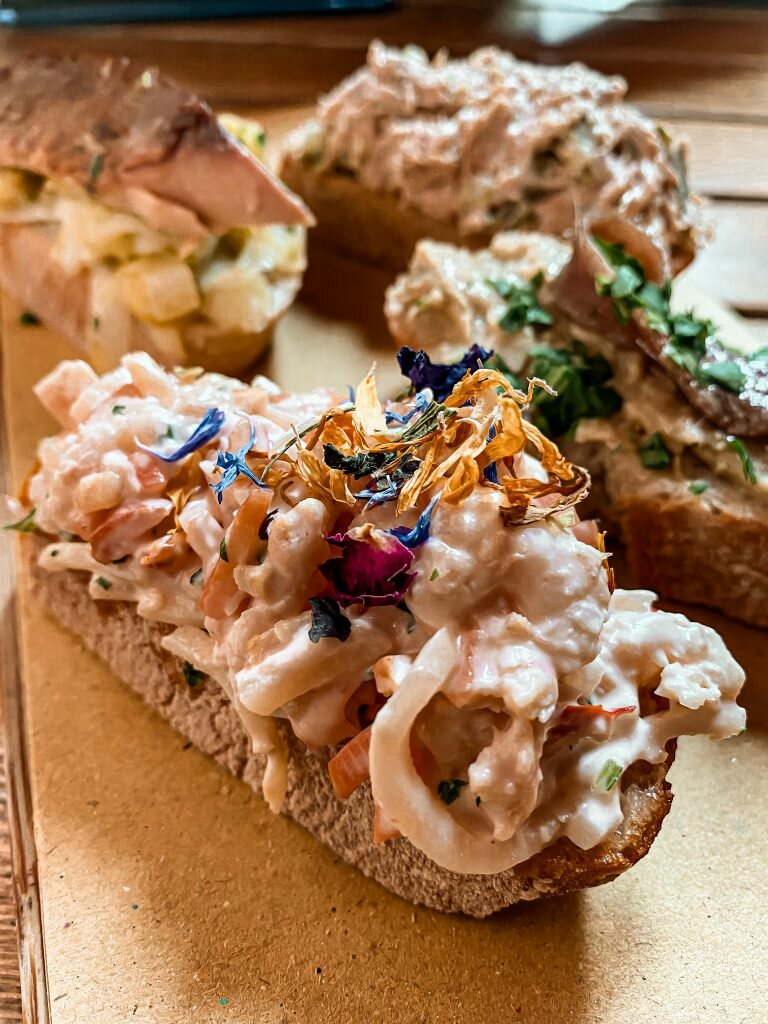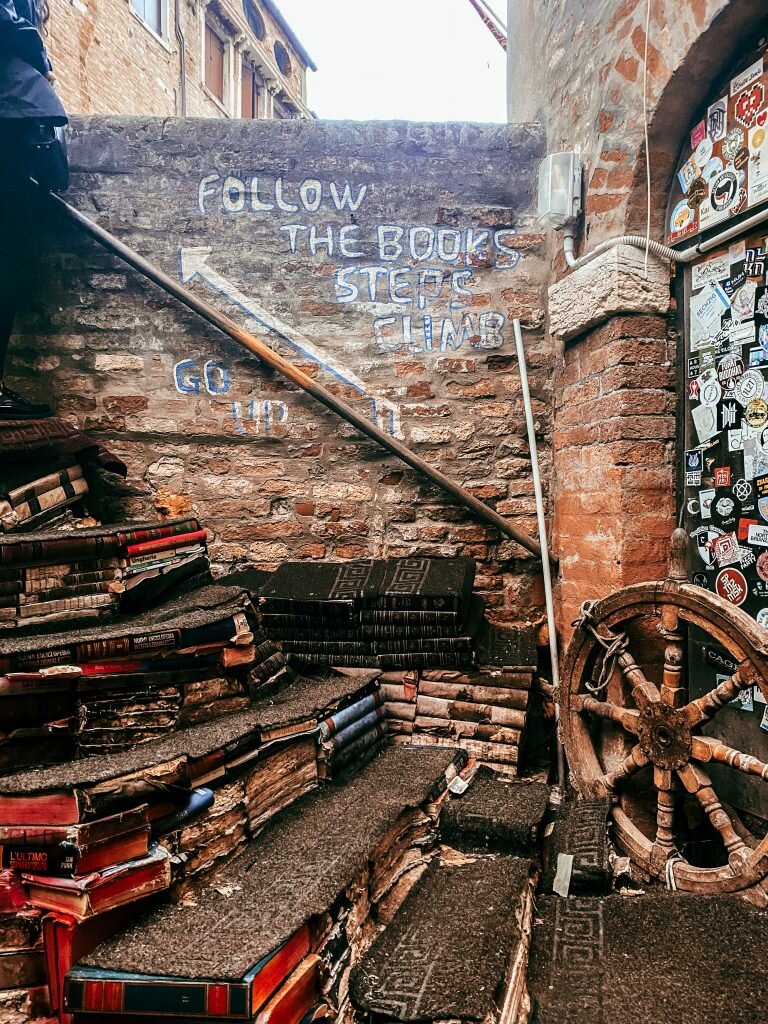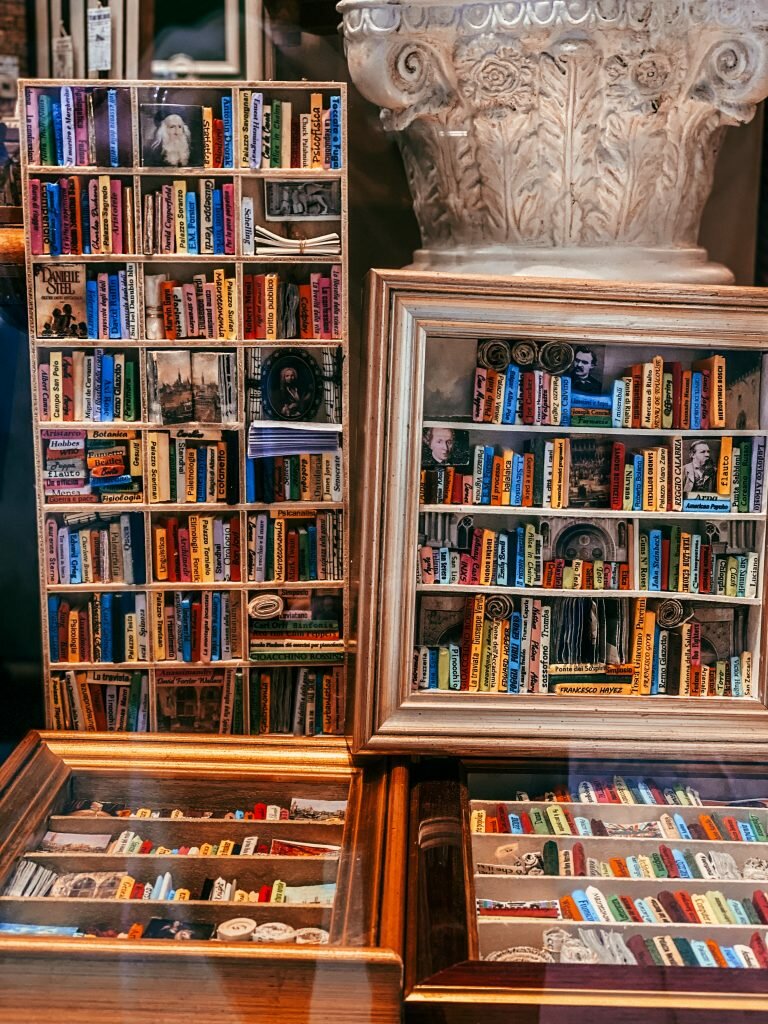This post contains affiliate links – simply means that if you purchase something by clicking on the links, I make a small commission that funds my iced coffee while I create more content for you. It doesn’t cost you anything (unless you buy something for yourself of course).
At 14, I was first introduced to the opulence and charm of Venice through Shakespeare’s Merchant of Venice. While I wasn’t exactly a fan of that play, I yearned to visit someday. I finally realized that dream more than a decade later. After spending three nights in romantic Verona, we hopped on a train and made our way to Venice – one of the most historical cities and an icon in Northern Italy. In this guide, you’ll find the 10 things that Venice is famous for. The list includes world-famous attractions, food to try and an introduction to a unique phenomenon that only occurs in Venice.
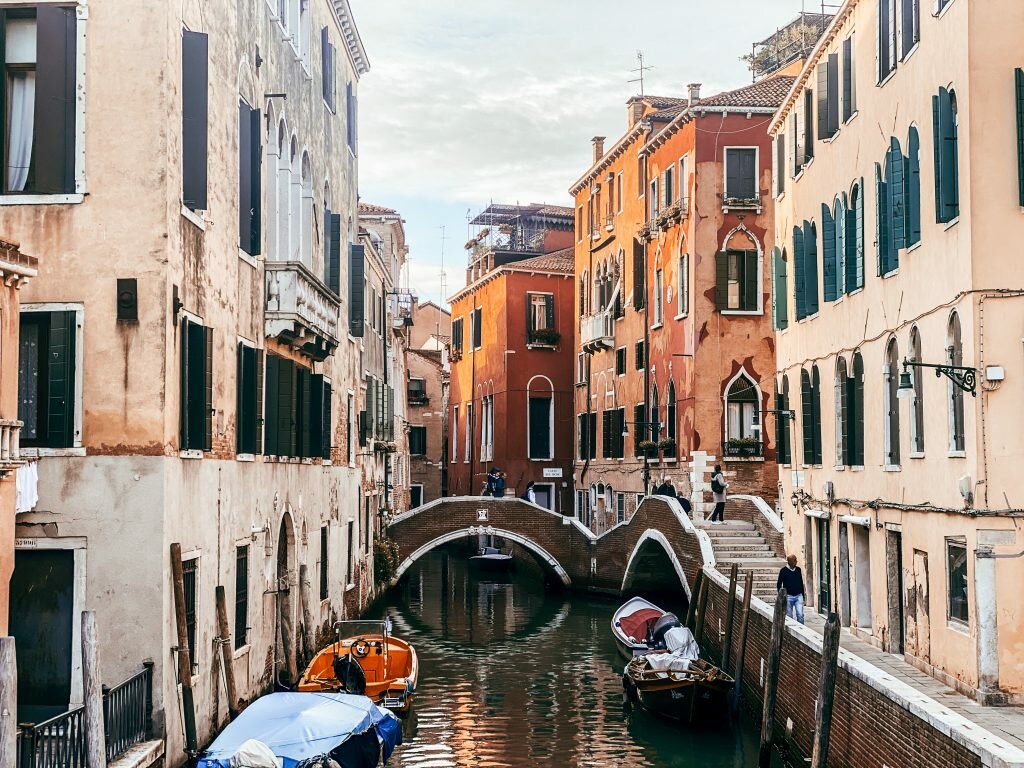
Getting to Venice
Venice is a beautiful little gem of North-eastern Italy. It is the capital of the Veneto region (Verona included), with excellent international and regional connectivity via plane or trains and buses.
The nearest international airport to the island is Venice’s Marco Polo (VCE), or the slightly further Treviso Airport (TSF) serving international low-cost and regional flights. There are airport shuttles that will take you to and from both the airports to the Venice bus station just right outside the city.
The main train station is called Stazione di Venezia Santa Lucia. Here you can get to other Italian cities and beyond easily and efficiently. It takes about 2.5 hours to get from Milan to Venice by train.
Canals
The canals are probably Venice’s most distinctive feature. There are a total of 177 canals in Venice of varying sizes. The biggest of them is the Grand Canal, an S-shaped thoroughfare that runs through the heart of the city, splitting it in two. These waterways are the main access roads for Venetian transportation as cars, bikes, scooters, and other motorized vehicles are strictly forbidden in the city.

Venice, the car-free city
Venice is made up of miles of canals, bridges, and cobblestone paths. Even if automobiles were allowed in the city, the narrow alleys, heavy foot traffic and the many, many bridges over water will make it impossible to get around.
Hence the best way to explore Venice is on foot, or via public water buses, private water taxis and gondolas. In the unlikely event that you might need a trip to the hospital in Venice, non-emergency patient water ambulances are available.
How are parcels and cargo delivered in Venice? Also, via water boats! It’s really fascinating to see! We’re quite used to seeing courier companies like DHL and their trucks making delivery rounds. In Venice, you’ll see distinct yellow water boats with the DHL brand, cruising down the canals, delivering parcels.

Public transportation on water
Regardless of how you got into Venice (via bus, train, plane), you’ll most likely need to transfer to a water transport at some point.
Vaporetto, or the public transit water bus, is one of the main modes of transportation in Venice. Single-journey tickets are €7.50 and can be purchased from ticket machines, or ticket offices located at most of Venice’s major stations. The tickets are indeed pricey, but they are most economical if you’re planning a day trip to the nearby islands of Murano and Burano. More details below!
Alternatively, private water taxis allow safe and convenient travels around Venice. Some even take you right to the doorstep of your hotel. But trips on these water taxis don’t come cheap. Depending on the taxi operators, distance and number of people, a trip from the Marco Polo Airport to the city centre costs approximately between €105- €135. Most definitely not affordable for the average travellers like me.
World-famous attractions in Venice
Gondolas
Once upon a time, gondolas were the main means of transport getting around Venice. Now, these traditional gondolas are popular with tourists who seek a once-in-a-lifetime “authentic Venetian experience”.
By law, all gondolas available for hire must be painted black. However, some gondolas are decorated fancier than others, decked in plush seats, flowers and even fairy lights. Venetian Gondoliers are most recognisable in their navy blue or red striped shirts and straw boaters.
And not just about anyone can become a Gondolier – all Gondoliers require a permit. To become a certified Gondolier, they would have to undergo intensive training in Venetian history, language courses and must pass a stringent exam before a permit is granted.
A gondolier must be physically strong and have incredible balance to navigate through the varying water conditions at the Grand Canal and ensure the safety of their passengers at the same time. I am in awe of their ability to remain stable and stoic regardless of how choppy the water can get, and not once have I seen any Gondolier losing their balance.
The official price for a 30-minute gondola ride is €80 during the daytime. Sunset and night-time gondola rides cost an upward of €100. Extra charges if you want the gondoliers to serenade you while cruising down the canal. There are also gondola tours available if you’d like to save a little, and don’t mind sharing with other strangers.
Piazza San Marco + Rialto Bridge
Piazza San Marco or Saint Mark’s Square is home to a majority of the attractions that Venice is famous for. Here you can find the Basilica San Marco and the Doge’s Palace, and the Bridge of Sighs is just a few minutes’ walk down the cobblestone paths. There are also several street stalls selling souvenirs, snacks and refreshments too should you get peckish.
If you are a museum buff, the Venezia Unica City Pass offers access to major attractions in Venice, and to the Glass and Lace museums in Murano and Burano respectively. The pass also allows for unlimited travel on the Vaporetto, so you can get from one place to another, or do some island hopping with ease!
Rialto Bridge is also one of the things that Venice is famous for. The imposing bridge is the oldest of the four bridges on the Grand Canal and is by far the most crowded. It’s one of the famous photo spots in Venice and there’re shops selling trinkets, souvenirs, and even sporting goods on the bridge. There are also restaurants and bars with seats right by the bridge, offering a spectacular view of the hustle and bustle of the Grand Canal.


During our time in Venice, we stayed at Riva Del Vin, a boutique hotel with an unobstructed view of the Rialto Bridge. It’s a quaint and cosy hotel, and we got a room on the top floor. I believe it’s the most unique room in the hotel – our room wasn’t even marked by a number! We particularly enjoyed the complimentary breakfast where you order your choice of either hot or cold breakfast (or both if you like) and then pop out to the terrace to enjoy the view of the Rialto Bridge and the Grand Canal.
Food Unique to Venice
Cicchetti
Cicchetti is essentially a little snack or side dish served in bars, or in Bácari of Venice. Pronounced “chi-KET-tee”, the term includes tiny morsels like sandwiches, meatballs and bruschetta-like goodies piled with delicious ingredients served on a plate. They are quite affordable and can be eaten at any time of the day. The Cicchettis come in different variations to suit the different dietary needs: meat, seafood and vegetarian or a combination of either.
During our trip, we’ve enjoyed a variety of Cicchetti, which includes toppings like Sarde in Saor – sardine marinated in vinegar, onions, and raisins. Also, Baccala Mantecato, creamed dried cod season with salt and pepper. I’ve searched high and low for the swordfish kind, another thing that Venice is famous for but wasn’t so lucky. I especially love swordfish and its texture and taste, so I was really looking forward to it.
Risotto al nero di sepia
In English, it’s directly translated as squid-ink risotto. The jet-blackness of the rice may be off-putting for the uninitiated, but it’s so, so delicious. While risottos are notoriously served plain and boring, some restaurants have thoughtfully added actual squid into the tasty dish… which I obviously love.

Unique Phenomenon
Acqua Alta
Venice is essentially an island made of many, many canals and surrounded by waters of the Adriatic Sea. With climate change and rising sea levels, tides, winds and long waves, Venice will have to deal with periodic flooding called Acqua Alta, or “high water”. During Acqua Alta, parts of the city would be waterlogged and sometimes be inaccessible to foot traffic. In lower parts of the city like Piazza San Marco, platforms would be in place for people to get across without getting wet.
Usually occurring during the months of autumn and winter, we got to experience Acqua Alta on our second last day in Venice. It was an experience to be walking across the piazza on a platform in a single file. We watched in amusement as adults (most probably not local) had fun splashing in the thigh-deep waters in the middle of the piazza.


Liberia Acqua Alta
One of the most beautiful and unique bookstores in the world is located right in Venice. Home to thousands of books stacked across shelves, raised platforms and a massive gondola in the middle of the room, plus a few resident cats, the books in Liberia Acqua Alta is made to survive the flooding. This unique bookstore is unlike other bookstores I’ve visited in my travels – it’s full of character, and they even have merchandise with their resident cats on them. I love cats immensely and was happy to spend some pocket change on cat-themed postcards.
Day trips to Murano and Burano
I would really recommend spending more time in Venice, as there’re lots to see and do. It also gives you the opportunity to hop on the Vaporetto and head to the nearby islands of Murano and Burano. Murano is world-renowned for its beautiful, handmade Murano glass. While Burano is most famous for its Instagrammable colourful buildings, and lacemaking.
Day trips to these islands are easily accessible from Venice’s Fondamente Nove (F.te Nove). Route 12 departs Venice every 30 minutes and goes to both Murano and Burano. Single trip tickets cost €7.50, or you can purchase the one-day pass that gives you unlimited rides on the Vaporetto for €20.
I recommend this option for those who’d like to visit Murano and Burano on the same day. It’s totally worth the price. Tickets can be purchased online, or at any ticket machine near the major stations in Venice.
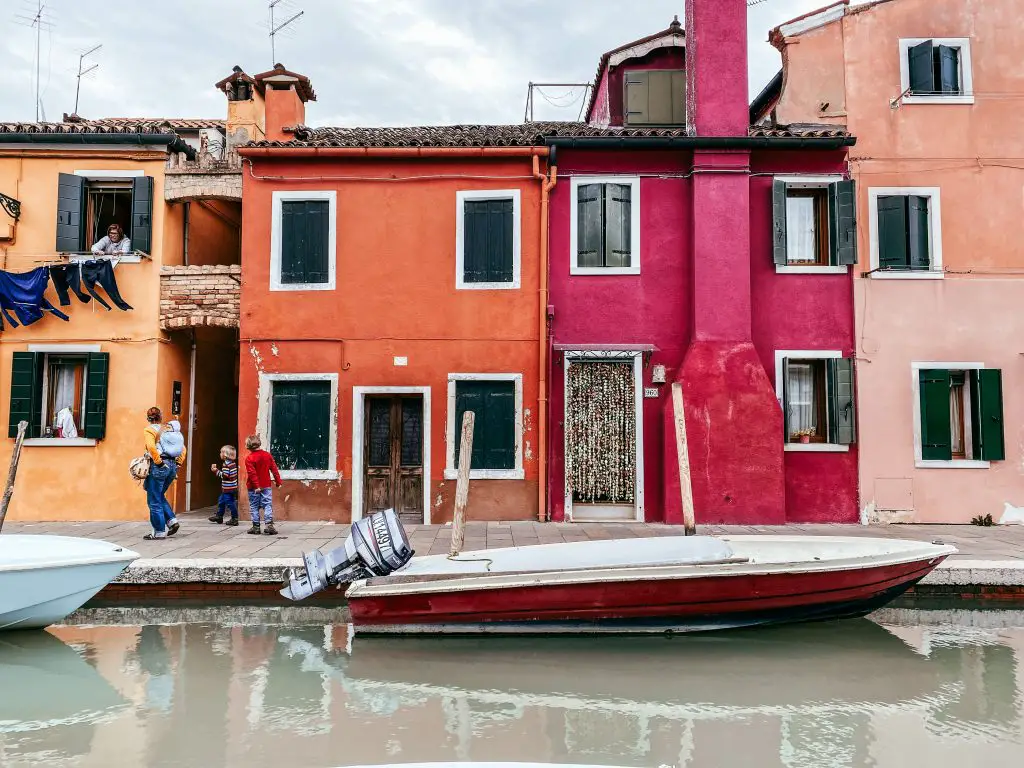
Final thoughts on Venice…
Venice was the final stop on our autumn Italian trip, and I didn’t regret spending a total of 3 nights there. Even though we didn’t hit the museums or rode the romantic gondolas, we still had so much fun exploring the little alleys, eating food, and checking out the little local handicraft shops.


Check out our other posts on Italy here!
- 24 hours in Milan: How to spend a fruitful and unforgettable day in Italy’s fashion capital
- 24 hours in Verona: How to spend an amazing day at Italy’s most romantic city
- Burano Day Trip: 5 reasons why you must visit the most vibrant town in Europe
- Procida travel guide: A gorgeous hidden gem in Southern Italy
Like this post? Pin it here!






